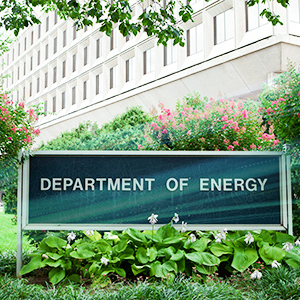Blog
Published: October 16, 2017
Department of Energy Proposes Market Changes
On September 28th, the Department of Energy (DOE) proposed that the Federal Energy Regulatory Commission (FERC) require independent system operators make whole certain “baseload” energy generators. This is only the second time in the history that...
Department of Energy Proposes Market Changes
October 16, 2017

On September 28th, the Department of Energy (DOE) proposed that the Federal Energy Regulatory Commission (FERC) require independent system operators make whole certain “baseload” energy generators. This is only the second time in the history that the DOE has proposed FERC to make a ruling, with the other instance being in 1979.
This has been, to say the least, controversial.
There are three main sources of controversy with the proposed rule:
- There were few details given in the proposal
- The time frame for making a decision is quite ambitious, and
- The effects that implementation would have on competitive power markets
The proposal is very sparse on details. Per the order, facilities “able to provide essential energy and ancillary reliability services” and with a 90 day on-site fuel supply will be eligible for recovery of costs and a guaranteed rate of return. Critically, it does not specify at what level the plant should be able to run for 90-days based on its fuel supply. In 2016 the average coal plant ran at only one half of its rated capability, meaning that the difference between operating for 90 days at normal rates verses peak utilization would mean twice as much fuel would need to be stored on hand. Similarly, there is no structure to penalize facilities that drop below the 90-day supply in non-emergency situations or fail to maintain reliability in emergency situations, as was seen during the winter of 2014.
The timeframe has also been highly criticized, as it requires a final decision be made within 60 days and go into effect no more than 30 days after that. In an industry which companies routinely make multi-billion dollar infrastructure investments, regulatory changes tend to be slow and methodical to give all parties time to understand implications and plan accordingly. Generation retirements, for example, are normally announced a year or more in advance to give the local power system operator time to evaluate the impacts and decide how best to proceed. To completely change how generators are compensated in 90 days is much different to how things have happened in the past and could present difficulties as system operators figure out how to implement the changes.
Lastly, the effects that the rule would have on competitive power markets could be drastic. While there are currently transfer payments made in these markets to generators with desirable characteristics, there is, by definition, no guaranteed rate of return as the rule proposes. The proposal does leave the mechanics of implementation to the various ISOs, though in most markets this is would likely be accomplished via a monthly true-up. Under this system, the difference between the guaranteed rate of return and the revenues earned in the market would be socialized, leading to higher end user costs. Additionally, regulations would have to be formulated regarding how subsidized plants would be entered into capacity auctions, similar to rules in place for subsidized renewables.
While this proposed rule has drawn much criticism, FERC seems to be moving toward making a decision within the 60-day timeframe suggested. Reactions from sitting commissioners have been decidedly mixed, with Acting-Chairperson Chatterjee generally supportive of the measure and Commissioners Powelson and La Fleur seemingly against it. At present the commission is taking comments from the public and various stakeholders, after which it will issue its own comments before ultimately making a decision.
Trane and the Circle Logo are trademarks of Trane in the United States and other countries.
